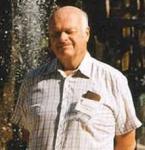 William R. CorlissOne of the most interesting and scientifically-important people I ever met was the independent scientist William R. Corliss. Since the 1970s, he was by far the world’s finest collector, categorizer, and ranker of scientific anomalies. He made himself the world’s greatest authority on things that don’t fit the paradigms of the times.
William R. CorlissOne of the most interesting and scientifically-important people I ever met was the independent scientist William R. Corliss. Since the 1970s, he was by far the world’s finest collector, categorizer, and ranker of scientific anomalies. He made himself the world’s greatest authority on things that don’t fit the paradigms of the times.
I had a long meeting with him in 1988, and corresponded several times with him afterward. He was always a scrupulous scientist and a quiet, reserved, proper gentleman. Bill died of a heart attack on July 8th, age 84.
Bill experienced organized Skeptics as debunkers, enforcers for mainstream-paradigm-as-law, and thus enemies of anomalies. He definitely recognized that some claims are indeed bunk, deserving and needing debunking.
Science always notices a lot of things, and it takes time to fit these pieces into the puzzle – sometimes months, sometimes centuries. Until they fit, the odder pieces are anomalies. Narrow-minded swallowers of paradigms-they-are-taught ignore them whenever possible, and pooh-pooh them when they’re brought up. Broader-minded investigators of Nature comb through them for items that might, now, fit; or items that now point more clearly in some novel direction. Yet others (including most astronomers who mentioned Corliss) browse through anomalies simply because they’re neat, or fun, or inspiring, or awesome, or remind us that we don’t know everything and may never.
Bill spent enormous numbers of hours combing scientific literature for such anomalies, often driving to Washington, DC, to use the Library of Congress and other scientific libraries. He was looking for evidence about how Nature works.
Just what constituted an anomaly changed with the times. Early on, when plate tectonics was the “challenger” paradigm, he sought out nuggets that supported it; later, when it became the “dominant” paradigm, he sought items to the contrary. He supported Chip Arp’s challenge to interpreting galaxies’ red shifts as distance markers. He was very slow to accept that Arp seems to be, simply, wrong … but he always followed the evidence. Several items that Corliss plucked from scientific literature surely are mistaken, but more are valid, though (as with everything else in Science) subject to refinement and reinterpretation.
Bill compiled his findings into vast topical compendia. He commissioned most of the drawings from geologist/illustrator Jack Holden, though Corliss and Holden never met. A few of his books were marketed rather widely by large publishing companies. All the rest were published by The Sourcebook Project, which was Bill, his wife Virginia, and their barn.
Bill was best known as an “anomalist”, most praised by the Society for Scientific Exploration, and bloggers of the “unknown”. He had many fans among seekers of cryptids, UFOs, and other things beyond Science.
The scientific establishment usually ignored him. A few, like Joe Ashbrook, acted visibly uneasy at the mention of his compilations. That always confused me, because all Bill quoted were scientific publications.
Bill lived on a farm north of Baltimore. He was a man of his times: though he did commission a website for his wares, the torrent of spam scared him away from eMail. His website doesn’t take credit cards, and directs customers to mail checks. Every communication I got from him over several decades was typed on a typewriter, not a word-processor.
I hope ways are found to preserve his files and keep his work available to the public.
